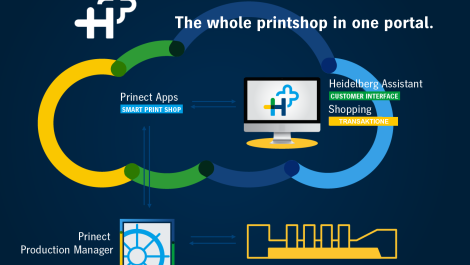The weekly Verdigris blog by Laurel Brunner
A couple of years ago carbon footprinting was high on the agenda for all industries. People worked feverishly to develop standards to support it, even in the printing industry which has a standard dedicated to calculating the carbon footprint of print media. ISO 16759 was published a couple of years ago since when several carbon calculators have been certified for compliance to it. Heidelberg and Ricoh have both tried to encourage uptake, and ISO has sold quite some copies. So that’s all good, however there is definitely waning market interest in matters green. And many carbon calculators are considered to be simply too hard to use.
The market’s reluctance is probably due to several reasons, the most important of which is that the commercial benefits of an environmentally accountable business are not immediately clear. Nor are they easily proven or universally relevant. For too many businesses there are perceived to be no compelling commercial reasons to go green. This is despite the fact that cutting carbon cuts costs, both tangible ones through more efficient resource use and intangible costs through better process control. Nevertheless it is curious that this message of economic benefit isn’t being heard, so perhaps it is being heard but it’s getting ignored.
Most business owners want to improve their margins, but we all want to go for the quick wins. Anything that requires more effort or costs money such as developing processes for waste handling or storage of hazardous materials, can be easy to lose in the shuffle of other priorities. The traditional business focus has been to maximise profits without breaking the law, upsetting customers or increasing staff churn. But business has got to change from such a stance to become more process driven, because this is where a competitive edge is to be had. Just think how many websites you turn away from because the process of finding or buying something is rubbish. So it is with any business interactions.
Process development can be very time consuming but efficient processes pay off and they provide a foundation for continuous improvement. When carbon footprinting is part of a larger process, such as an environmental management system, it becomes easier. Like colour management within a prepress workflow, carbon footprinting is a task, an applied process even if it’s just plain hard. Whether it’s for production workflow or environmental accountability there’s no getting around the fact that process development takes investment and commitment. However in solving the problems that are hard, a business can achieve improved margins and continual improvement. More importantly it can provide a valuable competitive edge.
http://verdigrisproject.com/blog/is-interest-in-carbon-footprinting-stalled
This article is part of the Verdigris series of stories about understanding the environmental impact of print. The Verdigris Project is supported by Agfa Graphics, Canon Europe, Digital Dots, drupa, EcoPrint, EFI, Fespa, HP, Pragati Offset, Ricoh, Splash PR, Unity Publishing and Xeikon.





